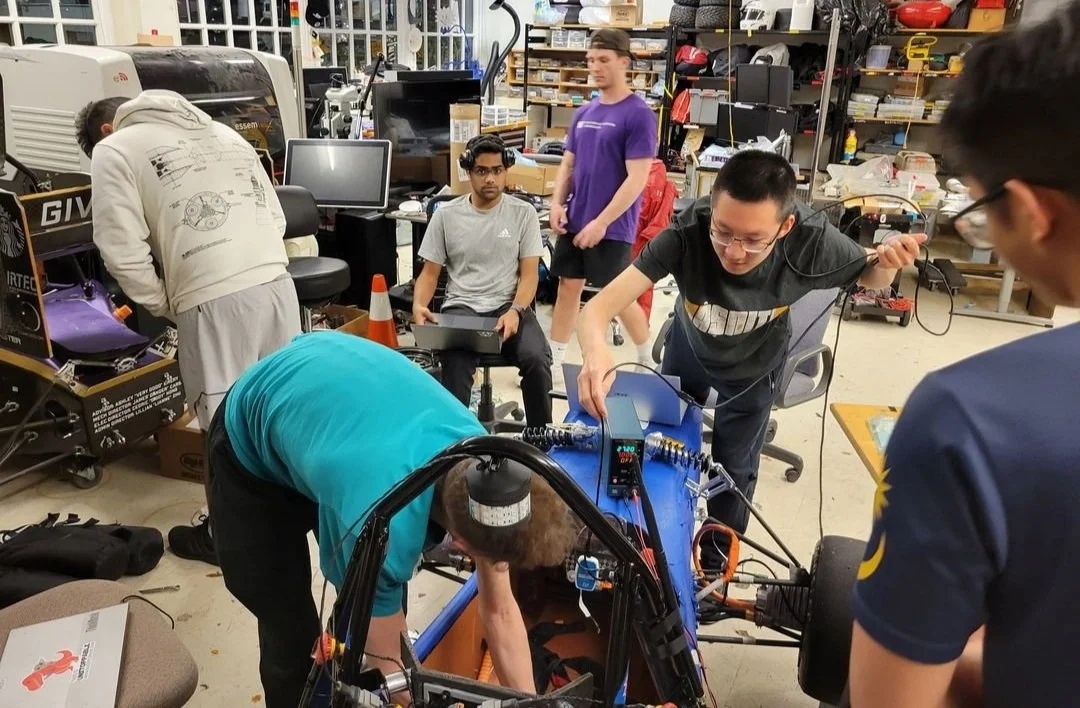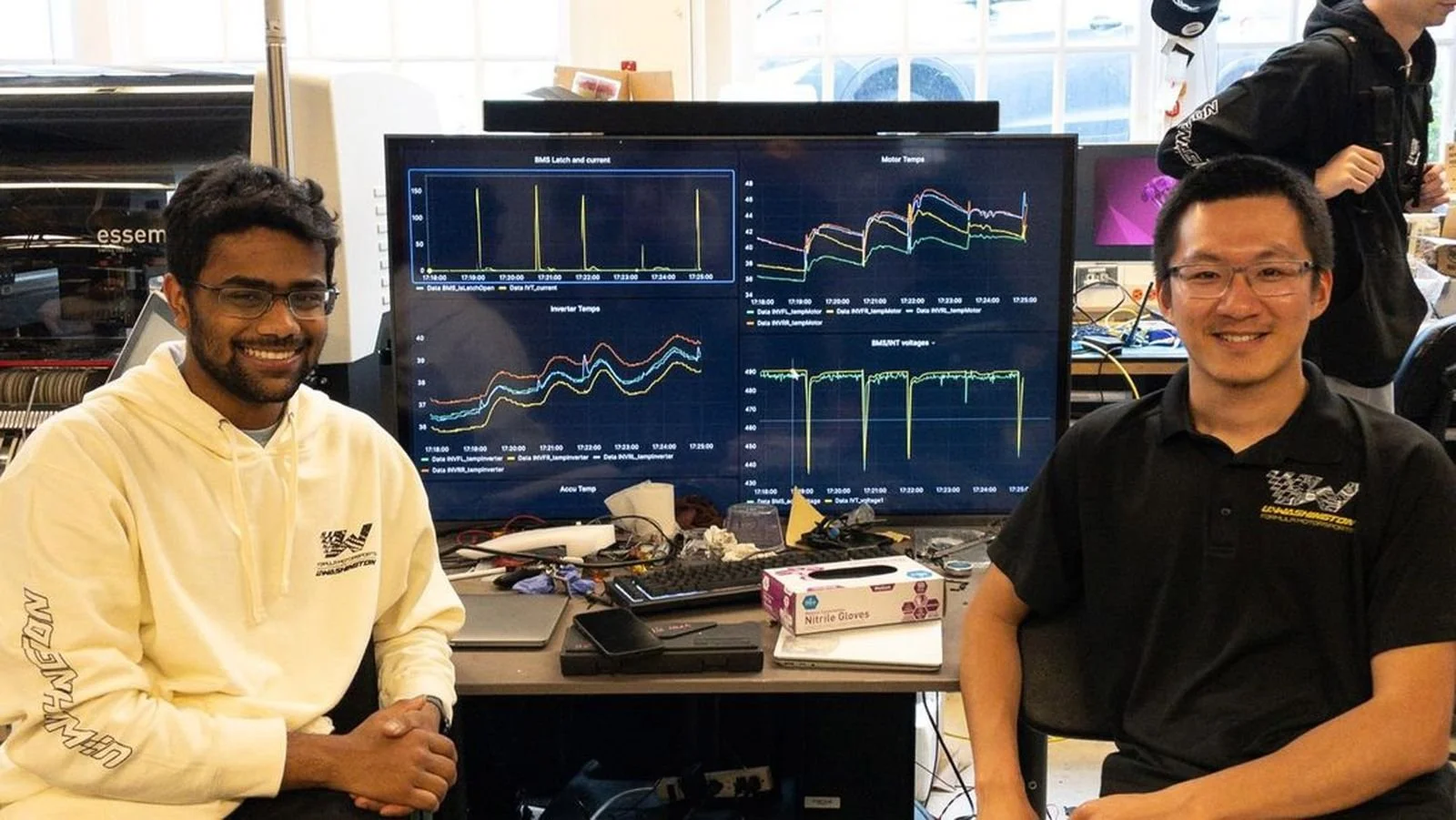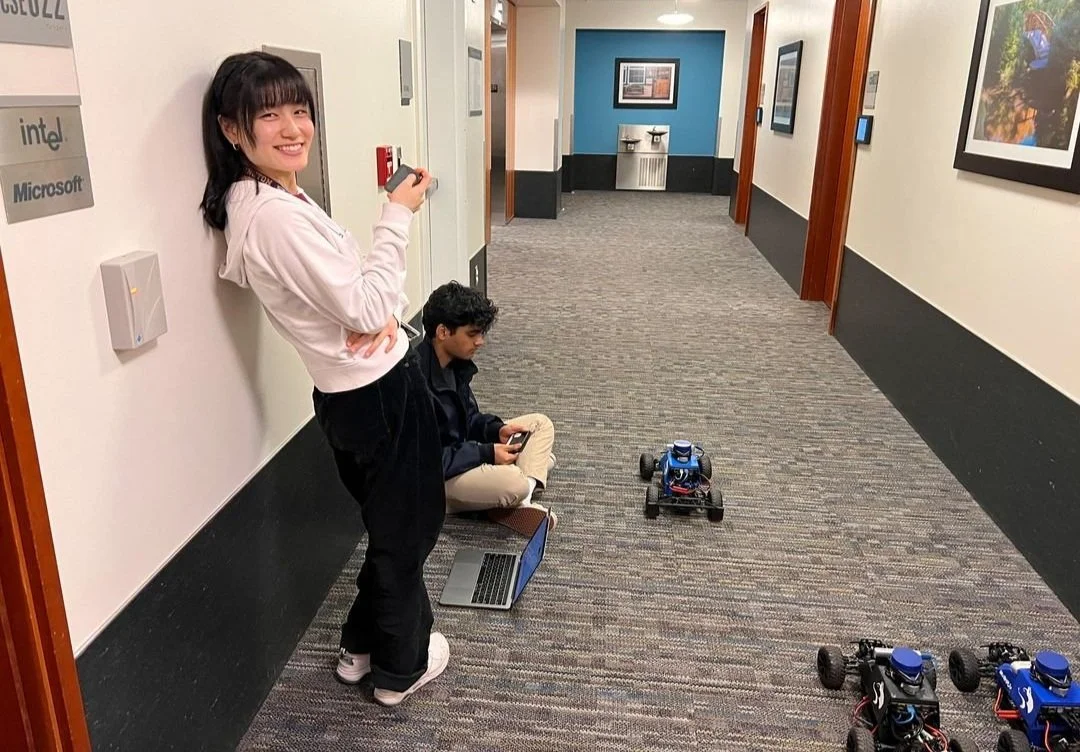Electrical
-
Electronics designs the various printed circuit boards (PCBs) and integrating the low voltage systems throughout the vehicle. Projects include sensor data acquisition, driver interface systems, power distribution, and wiring to integrate all the electronic subsystems. Working with eTrain in Spring quarter, there is a large emphasis on producing a reliable vehicle that can consistently run as expected. This involves heavy debugging sessions, reviewing wiring, and other testing.
-
The Software team spearheads the design, implementation, and integration of all programmable systems within the vehicle. This subteam’s projects center around enabling the car’s Controller Area Network (CAN Bus), a communication protocol that connects systems such as the high-voltage battery, inverters/motors, driver dash, low-voltage power distribution, and much more. The Software subteam also collects and stores all vehicle data across the CAN Bus using a state-of-the-art telemetry system, which is used to tweak parts that shave seconds on race days. By being on the software team, members get real full-stack experience, from developing low-level STM32/RP2040 modules in C/C++ and Python to client/member-facing applications in JavaScript.
-
As the newest division of the UW Formula team, Driverless is pioneering the development of an autonomous system for the team’s race car. Driverless is more separate from the rest of the team, since it is operating on a different timeline and only plans to compete a few years down the road. However, we are planning the development of T35 with lots more consideration of Driverless so it will be easier to test on. The flow of events for an autonomous system is sometimes described as sense-plan-act. First, the vehicle must sense its surroundings using its various sensors (e.g. camera, LiDAR) and map its location within its environment. Then, the vehicle plans a path to traverse the environment. Lastly, the vehicle follows control commands to stay on the desired path, and applies actuation to physically steer, throttle and brake. This year, Driverless will refine its existing software logic, while members of Firmware, Electronics, and Suspension will work on some hardware/mechanical components for Driverless.



